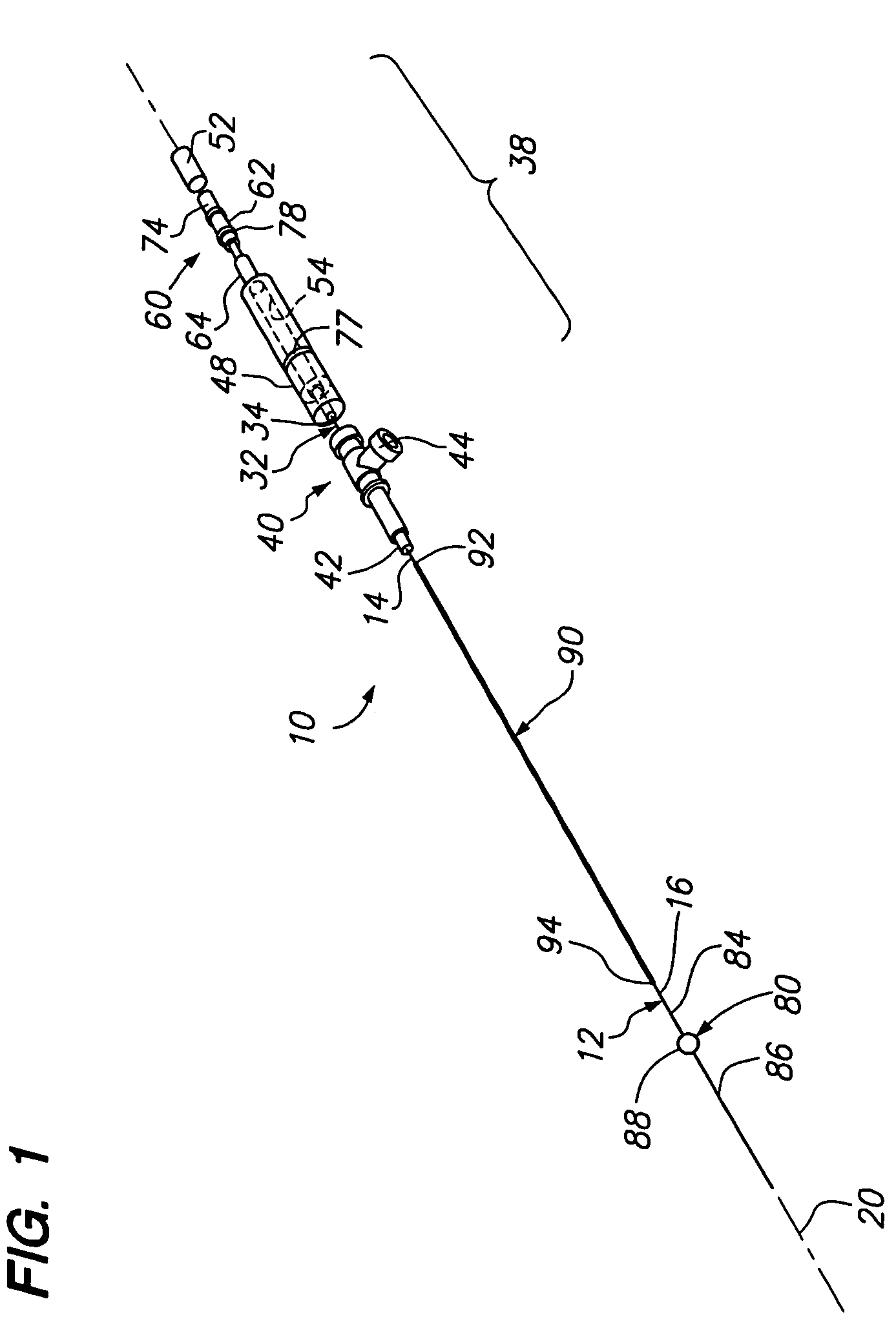Apparatus and methods for sealing a vascular puncture
a technology of vascular puncture and apparatus, applied in the field of apparatus and methods for sealing punctures, can solve the problems of time-consuming and expensive procedures, requiring as much as an hour of medical professionals' time, and uncomfortable for patients
- Summary
- Abstract
- Description
- Claims
- Application Information
AI Technical Summary
Benefits of technology
Problems solved by technology
Method used
Image
Examples
Embodiment Construction
[0038]Turning to the drawings, FIGS. 1-6 show a preferred embodiment of an apparatus 10 for sealing a puncture extending through tissue and / or communicating with a body lumen (not shown). Generally, the apparatus 10 includes an outer member 12, an inner member 32 slidably coupled to the outer member 12 (best seen in FIGS. 3A, 3B, and 5), a hub subassembly 38 or other mechanism for biasing the inner member 32 relative to the outer member 12, and a balloon or other expandable member 80 coupled to the inner and outer members 32, 12. Optionally, the apparatus 10 may include an outer sleeve 90 that may at least partially cover the outer member 12.
[0039]With particular reference to FIGS. 1, 3A, and 3B, the outer member 12 may be an elongate tubular body including a proximal end 14, a distal end 16, and a lumen 18 extending therebetween (shown in FIGS. 3A, 3B, and 5), thereby defining a longitudinal axis 20. The outer member 12 may be flexible, semi-rigid, or rigid, e.g., having a uniform ...
PUM
 Login to View More
Login to View More Abstract
Description
Claims
Application Information
 Login to View More
Login to View More - R&D
- Intellectual Property
- Life Sciences
- Materials
- Tech Scout
- Unparalleled Data Quality
- Higher Quality Content
- 60% Fewer Hallucinations
Browse by: Latest US Patents, China's latest patents, Technical Efficacy Thesaurus, Application Domain, Technology Topic, Popular Technical Reports.
© 2025 PatSnap. All rights reserved.Legal|Privacy policy|Modern Slavery Act Transparency Statement|Sitemap|About US| Contact US: help@patsnap.com



